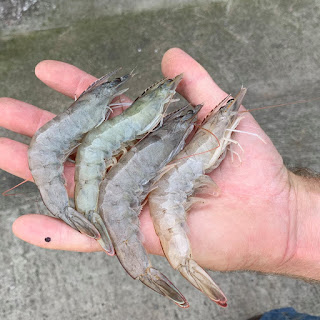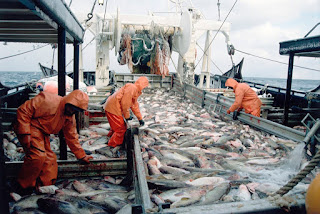Production of Food from Animals
Animal Husbandry:
Farmers adopt different methods of management for getting better yields in agriculture. In the same way, care is also required in the management of rearing animals. Providing food, shelter, protection
and breeding of animals is called ‘Animal husbandry.
Since long time, we have been using animals not only for obtaining food but also for agriculture, transportation etc. We realized their importance and domesticated them.
Cattle Rearing:
People living in rural areas used to
domesticate animals like cows, buffaloes,
bullocks, goats, sheeps, pigs, hens, etc.
Supplying of nutritious food,
accommodating clear and hygienic shelters
for animals are very important issue in
animal husbandry. Generally villagers send
their animal to graze at the places where
grass is easily available.
• Where do people rear their animal in
your village?
Cattle House
Have a talk with them and collect
information about cattle rearing. For this
you need a questionnaire. Following
questions may be helpful to you. You can
add some more questions as you wish
• What are the cattle here?
• At what places fodder is available?
• What are the places where water is
available?
• What are the necessities of rearing of
cows, buffaloes, goats and sheep?
• What are the major problems that
animal rearers generally face?
Earlier, villagers used to appoint a
person for cattle rearing and was paid by
them. This kind of practice is gradually
disappearing from our villages. Some of
the farmers keep their cattle in the sheds.
They do not take their cattle to the fields.
They supply fodder in those sheds. Rearing
cattle like bulls, cows and buffaloes in large
scale is also the same in sheds. Generally
the farmers in our country are cultivating
the land area of less than one hectare. Even
though mechanization is increasing in
agriculture, farmers use bullocks for
ploughing and other agricultural practices.
• Make a list of agricultural practices by
using bullocks and the buffaloes.
Rearing of goats and sheep is also
related to agriculture. Besides agriculture,
cattle rearing and sheep rearing are
beneficial to farmers. During off season for
cropping cattle rearers make fences in the
fields at off crop seasons. They keep their
sheeps and goats in the fenced enclosures
• Think in which way this practice is
helpful to the farmer as well as field
crops.
Taking care of animal health is equally
important task in animal husbandry. Most
of the times cattle sheds become unclean
because of the remains of fodder, dung and
urine. Dump these wastes away from the
shed. Care should be taken to prevent the
growth of lice and mytes on cattle’s body.
Foot and mouth disease is a common
and dangerous disease partially in
cows and buffaloes. Sheep and goats suffer
from worm infections.
Milk Production:
Our government treats producing milk
as an industry. We get milk from cattle.
Among cows, traditional species give
2 – 5 liters of milk per day. Murra, species
are reared in most of the districts in our
state. They give up to 8 liters of milk per
day. Haryana, Jaferabad, Nagapuri are the
traditional varieties of cows in our country
which give good quantity of milk. Jersy
(England) and Holstein (Denmark) are the
Foreign varieties. They give 25 liters of
milk per day. These foreign varieties are
cross bred with our native or local varieties.
They give 8 to 20 liters milk per day. Cows
play vital role in total milk production of
our country.
Holstein Cattle
Out of milk produced in our country
60% is used to prepare cheese, khova, ghee,
curd, milk powder and other milk products.
There are number of dairy farms in our
state. The milk in dairy farm is collected
from households and pasteurized. Milk is
preserved in packets and transported.
Milk collection
Is there a milk collecting centre in your
village?
• How do they collect milk and export?
• Do you know how they decide cost of
milk?
• Where is milk chilling center located
in your area? (For this you need to
observe milk packets which are
available in the market)
There are private and government milk
collecting and chilling centers in our state.
Practices in livestock keeping:
Being high milk yielding varieties, livestock (The animals that are used for milk and agriculture are called livestock) rearing is very important. Traditional livestock are becoming depleted because
of hybrid varieties. Let us read the following case study to know how local breeders conserve their livestock.
Poultry:
Production and rearing of hens on a large scale is generally
called poultry. Billions of hens are reared worldwide
for eggs and chicken. We know that farmers rear
cocks and hens in villages. Most of these are local varieties
We get around 74% chicken and 64% of eggs only
from poultry farms. Poultry has emerged as one
of the major industries in last two decades. India
achieved 3rd position in the world by producing
90 million eggs per annum. And also placed in
7th position in the production.
• Are the hens reared in the poultry is same as our
traditional varieties reared by farmers in the villages?
Generally poultry farms are of two types.
One is for production of eggs and other for meat.
Broilers are commonly used variety in poultry.
They are reared for meat. Layer are reared
for the production of eggs.
Natural, wild varieties grow fully in
5 to 6 months. But broilers grow fully in
just 6 to 8 weeks. This happens due to
genetic modification in the hens.
New Hampshire, white Plymouth,
Rhode Island Red, white leg horn, Anoka
are the foreign varieties of meat giving
species.
Broiler chicken
Some hens reared only for production
of eggs. Some hens are able to lay 300 to
350 eggs in their life span. But, one has to
follow proper management techniques up
to 21 to 72 weeks for getting eggs.
During January to April, egg prices are
high. Do you know what is the reason? This
is because of most of the eggs are used for
hatching. In this period, rate of hatching is
more. Hatchability of eggs is generally
influenced by 37 to 38°C temperature. In
poultry industry hen wastes (litter) is used
as nutritional manure in agriculture.
Egg is a nutritious food.
Sources of nectar:
Plants which contain nectar and pollen
liked by bees are called bee flora.
The following are some of the more
important plants either wild or cultivated.
Fruit trees like citrus, apple, guava,
tamarind; Cultivated field crops like
mustard, gingelly, wheat, cotton, sunflower;
Vegetable plants like beans, lady's finger,
brinjal; Timber yielding trees like acacia,
neem, sal and bushes, shrubs and natural and
ornamental flower plants are all the sources
of nectar. The bees of a colony sometimes
rob another colony especially during
drought period.
Bee Hive
Production of honey in large scale is
by providing artificial bee hives. The hive
consists of floor board, brood chamber,
super chamber, top cover, inner cover,
frames and entrance rod. These parts can
easily be separated.
Artificial bee hive
The hive may be double walled or single
walled. These artificial hives are not similar
to natural hives. Try to find out the
differences between these two hives. To get
more yielding of honey from the colonies
a bee keeper has to follow some
management techniques. Various pests and
predators attack the honey bee colonies.
Wax moths, wasps, robber flies, dragon
flies attack honey bee colonies. King crow,
Bee eater are more harmful during swamp
period. Bee keepers should protect bee
hives from the pests and predators.
Fisheries:
Fish constitute an important and rich sources
of high quality animal protein. India has a coast
line of about 7500km and the total available area for
fishing both inshore and offshore is nearly
0.48 million square meter. In addition there
are extensive inland water areas comprising
of numerous rivers, fresh water and brackish
water lakes, reservoirs, tanks, ponds, swamps, etc.
Prawns
Marine Fisheries:
Marine fish are caught using many kinds of
fishing nets through fishing boats. With the
introduction of synthetic fiber nets, there has
been revolution in fishing gear material.
Fishermen catch fish by using machines is
called mechanized fishing.
They catch tons of fish everyday.
Mechanized fishing
Inland fisheries:
Fresh water resources include canals,
ponds, reservoirs and rivers. Brackish water
resources, where seawater and fresh water
mix together, such as estuaries and lagoons
are also important fish reservoirs. Fishing
is also done in such inland water bodies,
but the yield is not high.
Fish pond
Generally farmers rear only one type of fishes or Prawns.
More intensive fish farming can be done in composite fish
culture systems. Both local and imported fish species are
used in such systems. In such a system, a combination of
five or six fish species are used in a single fishpond.
These species are selected so that they do not compete
for food among them and have different types of food habits.
As a result, the food available in all the parts of the pond
is used. As Catlas are surface feeders. Rohus feed in the
middle zone of the pond, Mrigals and common carps are
bottom feeders, and Grass Carps feed on the weeds.
This species can use all the food in the pond without
competing with each other. This increases the fish yield
from the pond. Even if one species of fishes are
infected with disease it is not spread to others.
One problem with such composite fish culture is that many of these fishes breed only during monsoon. Even if fish seed is
collected from the wild, it can be mixed with that of other species as well. So, a major problem in fish farming is the lack
of availability of good quality seed. To overcome this problem, we have now been worked out to breed these fish in ponds using hormonal stimulation. This has ensured the supply of pure fish seed in desired quantities.














No comments:
Post a Comment